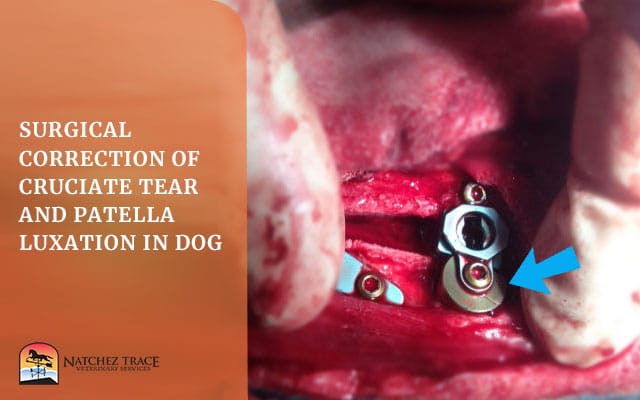Dogs that tear the cranial cruciate ligament frequently also have a luxating patella.
This situation presents a unique challenge to the veterinarian often requiring a surgical correction which is a total knee reconstruction.
Surgically correcting the cranial cruciate tear is fairly straightforward; however, fixing both at the same time can be much more complicated.
Tibial Tuberosity Advancement surgery allows for the simultaneous surgical correction of cruciate tear and patella luxation on the dog in a fairly straightforward procedure.
Cranial Cruciate Tear
The TTA is the latest surgical procedure developed to treat cruciate rupture in the dog.
Big dogs weighing over 50 lbs. are ideal candidates for this surgery.
Along with TPLO, this surgery is termed “a bone-cutting surgery” since the tibia must be cut in a sagittal plane to properly advance the tibial tuberosity.
The goal is to establish a 90-degree angle between the patella tendon and the tibial plateau.
By creating a 90-degree relationship between these structures, surgery eliminates tibial thrust. This, in turn, results in less pain and increased stability with a normal range of motion.
Medial Patella Luxation
Dogs with a luxating patella or kneecap often present with a torn cruciate simultaneously.
The medial patella luxation causes a mechanical lameness, not necessarily a pain-induced lameness unless the cruciate ligament is damaged.
Conformational abnormalities are generally the cause of medial patella luxation. Dogs that are bowlegged or small dogs with a shallow trochlear notch are predisposed to patella luxation.
Surgical Correction of Cruciate Tear and Patella Luxation in Dog
Initially, surgeons perform a TTA to change the geometric relationship of the patella tendon related to the of the tibia.
Then, they correct the patella luxation by deepening the trochlear notch with a bone rasp.
Lastly, they place a titanium spacer under the cranial wing of the TTA cage to offset the tibial tuberosity.







